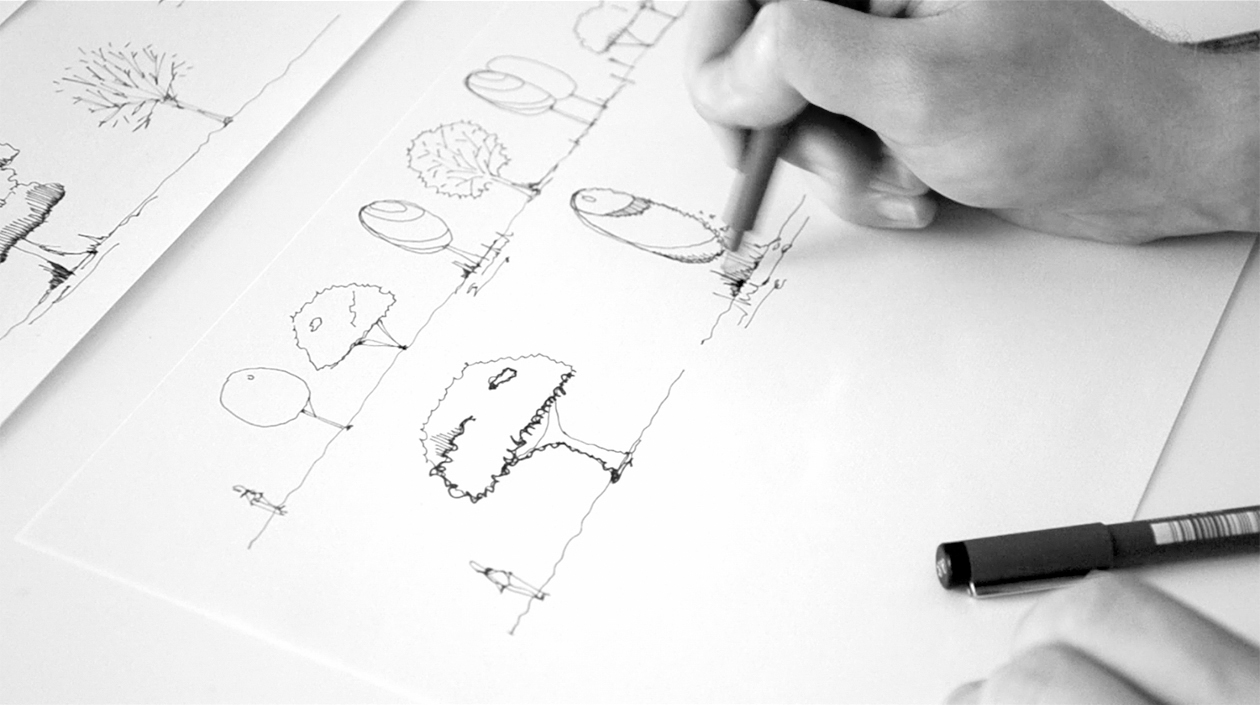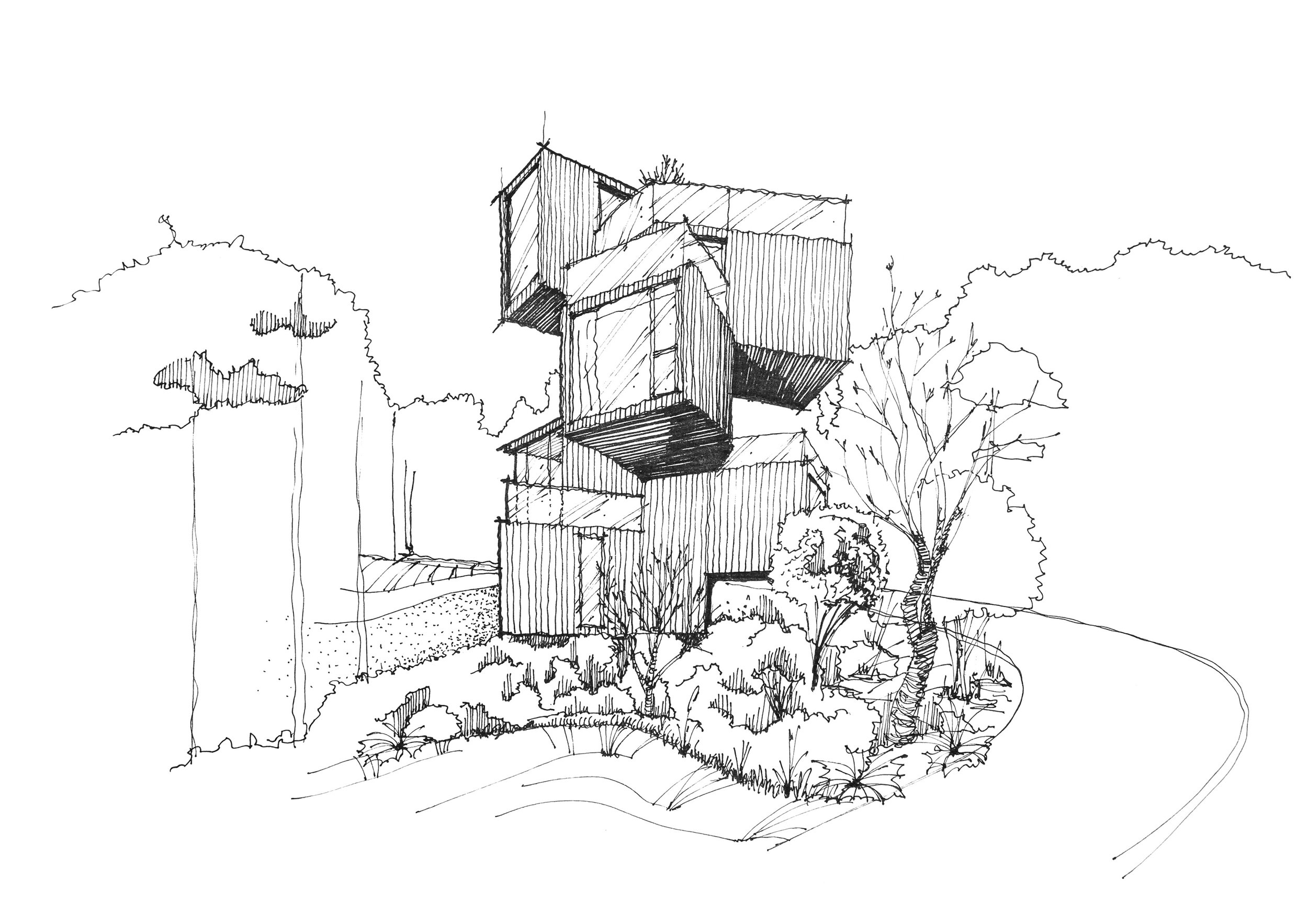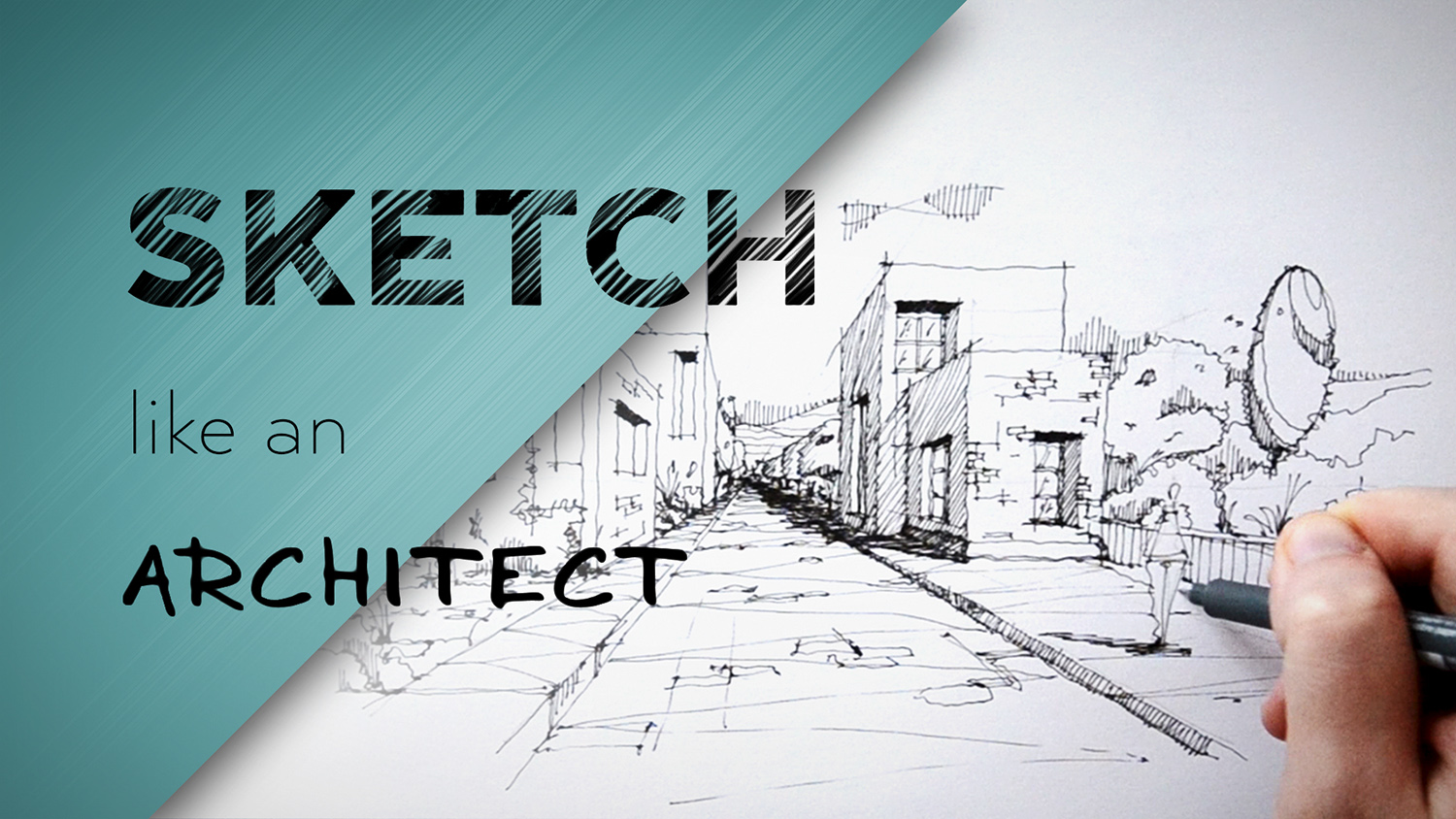[INTERVIEW] Why I Don't Use Rulers for Sketching
Back in Copenhagen in 2018, I had the chance to meet with Olga Sorokina. Olga is an interior designer from Russia and she makes beautiful interior sketches. She asked me for an interview for her blog about my approach to sketching and I very gladly accepted. Enjoy the read!
1. David, could you please tell us how did you come to architecture and what was your initial step in hand rendering?
First time I started thinking about studying architecture was in high school, in art lessons, where we were taught how to draw perspective for the first time. I think I was around 15 years old at that time. We learned how to draw 1-point and 2-point perspective with an urban theme - typical street view and corner view. I remember being so amazed by that, can't really explain why, but I fell in love with that process. So since then I was pursuing architecture path which eventually led me to studying architecture at the Czech Technical University in Prague. Right at the CTU I was given proper basics of architectural sketching which strongly influenced and shaped how I sketch today.
“Free-hand sketching brings so much more freedom to both sketching process and the dialogue that evolves from it.”
2. Your style is very bold and recognisable: black and white, freehand lines, no rulers. Could you please tell us about media you use and how it affects your approach if it does.
Yes, I really prefer not to use rulers, because free-hand sketching brings so much more freedom to both sketching process and the dialogue that evolves from it. I perceive sketching as a means of communication more than anything else. And free-hand sketching with wavy imperfect lines leaves a lot of space for opening a creative dialogue - either between colleagues or an architect and a client. The imperfections suggest that nothing's set in stone and that everybody is welcome to contribute with their own inputs.
As for media that I use, it's usually Staedtler Pigment Liners in thicknesses from 0.05 - 0.8 mm and if I go for colour, then colour markers Touch.
3. Could you please describe your process of creating sketches (and how long does it take), for example this one:
The process differs according to the type of sketch. There are many types, most of them are for communicating ideas, but some process sketches are simply for brainstorming, trying to understand a problem and come up with a solution, or for further shaping and verifying ideas that emerge on the way.
“I like to start with a thumbnail sketch where I first try to find the best composition. Then I begin either with a pencil or a pen to create a visual structure and set the right scale.”
If we talk about presentation sketches like this one (took about 40 min), I like to start with a thumbnail sketch where I first try to find the best composition in terms of relations between different elements and positioning on a canvas. Depending on complexity, I begin either with a pencil or a pen to create a visual structure and set the right scale. Then I use pens with lighter line weight to build up the main volumes and work with different depth planes. I continue with texturing and shading, adding more of surroundings and details. Final touches might include line work with heavier line weight for emphasis and contrast or optionally use of colour.
4. How do you structure your workday or your workweek?
Right now I work full time as an architect in Copenhagen so my main schedule is determined by that. But usually I get up earlier to sketch or plan and structure the goals for the day/week. I'm still finding my way around juggling with more balls at the same time as I have some smaller projects and collaborations on the side. Ideally I try to plan these things in advance every weekend for the coming week, but it doesn't always work out ;) I'm also more of an evening person, so I find myself with sudden energy around 7 or 8 pm, so that's when I'm actually most productive about these things.
5. David, please tell us about your sources of inspiration. What helps you to be productive?
As for sources of inspiration, I believe that architects shouldn't get inspired by another architecture - that's very limiting. Don't get me wrong, it's important to do recherche and moodboards with reference pictures, but that's not inspiration in true sense. In regards to this, there is one quote from architect Edmund Bacon, which really resonates with me. He says: "It's in the doing that the idea comes." It really does work like that for me - I get ideas during the process, very often as I sketch, because there are no barriers as with using a software on a computer. The connection between your mind and your hand is very natural and it supports all the creative flows.
It’s in the doing that the idea comes.
(quote by architect Edmund Bacon)
6. Could you please tell us about your course «Sketch Like an Architect»?
Sure, this course is for people who want to learn or get better at architectural sketching. This bite-sized online course's sub-title is 'Step-by-Step from Lines to Perspective' and my students learn everything from the very basics of making straight lines to gradually more complex compositions of sketched perspectives. On the way I also share tips & tricks on lines & 2D objects, perspective rules, shading and texturing, populating your sketch and adding vegetation, and combining all these elements into one awesome perspective sketch.
Part of this course is also a 60-page PDF Handbook with all the summarized information, worksheets for practicing, and finished examples of sketches with explained techniques. The PDF Handbook is also available separately on my Gumroad page.
7. How do you see the future of hand rendering in architecture and interior design?
I am very optimistic about this - I can't imagine something would replace hand-sketching in our industries in any foreseeable future. From all the reasons mentioned above I believe it will stay an important part of both design process and presentation and maybe there will be even more demand for it as the human touch added to hand-renderings is irreplaceable and will always connect us on a very human level.
“I can’t imagine something would replace hand-sketching in our industries in any foreseeable future.”
8. What one advise would you give for beginners in hand rendering?
Learn to observe and understand why things work and look like they do. Observation skills are essential for good sketching, for composition, light and shadows, proportions, materiality, and everything else. Train yourself you to be better at observing! What I love about sketching is that it forces you to understand the object first before you're able to draw it. In that way, when you sketch you'll always learn something new.
Interview with David Drazil by Olga Sorokina.
P. S. Please share this inspiring interview with your friends, they will be glad you did. Thanks in advance!





